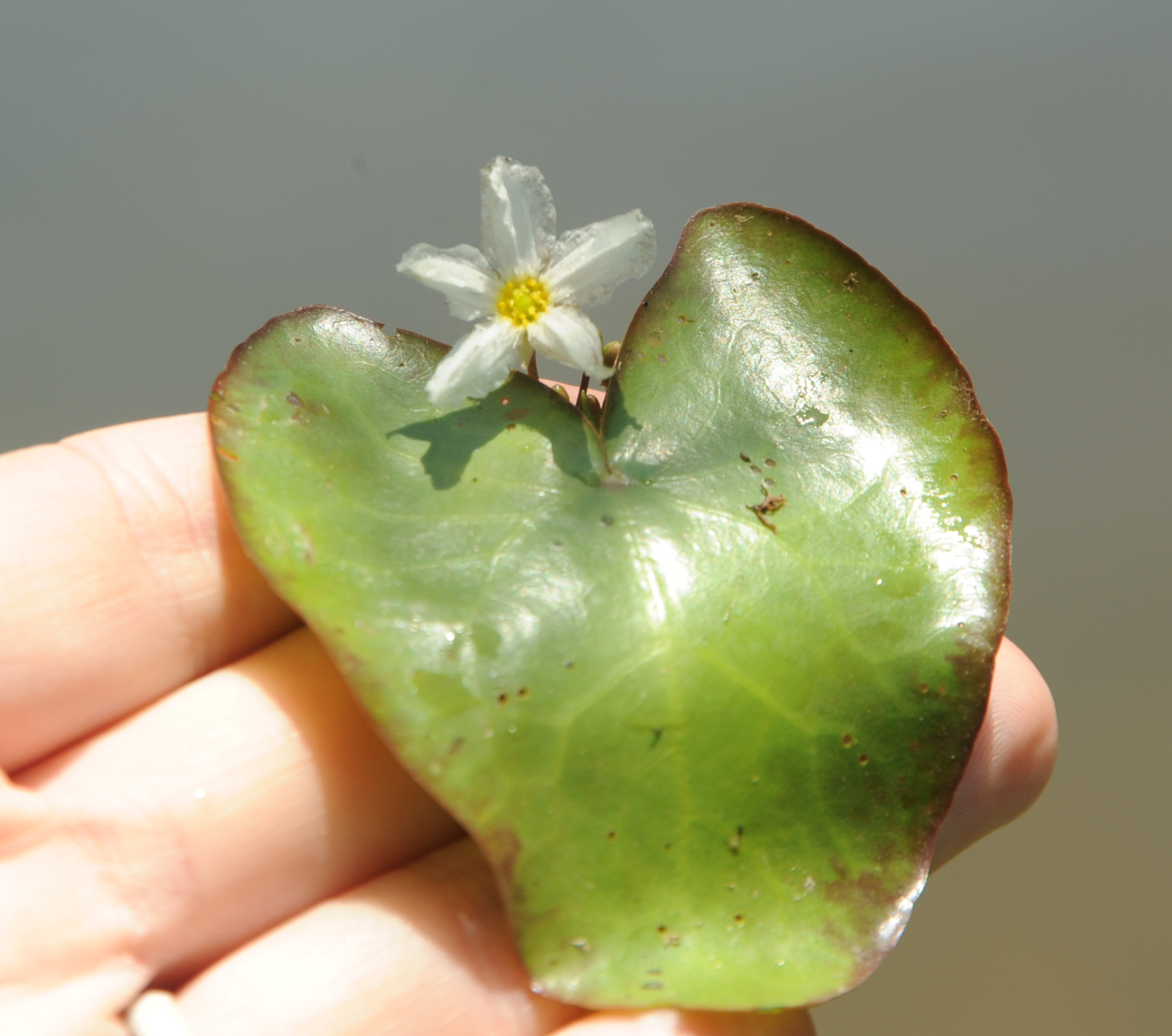Be on the Lookout for Purple Loosestrife and Floating Heart
/by Bridget Lassiter, Ph.D.
Weed Specialist, N.C. Department of Agriculture & Consumer Services
Many beautiful plants have been introduced to gardeners and landscapers through the ornamental industry. Most of these non-native plants stay right where they were planted and have no unintended consequences. However, there are always going to be a few bad players that escape cultivation and cause serious harm to the environment. Two plants that are of particular concern in North Carolina in are Purple Loosestrife and Yellow Floating Heart.
Purple Loosestrife flowers along Bat Fork in Hendersonville, NC. Photo by Rick Iverson, former Weed Specialist, NCDA&CS.
Purple Loosestrife (Lythrum salicaria) was introduced into N.C. as an ornamental plant in the early 1990s and has persisted in at least one location for more than 20 years despite yearly control efforts. This highly invasive perennial plant is a Federal Noxious Weed, and quite common in states to our north (Minnesota, Wisconsin, Michigan), but is not yet widespread in N.C. This plant has beautiful purple/pink flowers and loves to grow in wet and swampy areas. It grows prolifically in wetland areas and will eventually out-compete the native swamp plants that provide valuable food and habitat for wildlife.
Each plant can produce millions of seeds in a year, and one plant can have 30-50 seed heads if left untreated. The N.C. Department of Agriculture is actively managing three infestations of Purple Loosestrife in Guilford, Henderson, and Onslow Counties. In N.C., Purple Loosestrife has been found planted in commercial and residential landscapes. As a reminder, selling or transporting Purple Loosestrife or any other plants that are on the state and federal Noxious Weed Lists is prohibited.
Yellow Floating Heart flowers and leaves in New Bern, NC. Photo by Bridget Lassiter.
The Floating Hearts are a more recent introduction into the N.C. water garden industry. Although there are several native Nymphoides, two species within the genus - Yellow (N. peltata) and Crested (N. cristata) Floating Heart pose the greatest threat to our state and are both Class A state Noxious Weeds.
These ornamental aquatic plants have heart-shaped leaves the size of a golf ball, and either yellow or white flowers with 5-petals. The plants are rooted in soil, but the leaves and flowers float on the surface of the water. The plants have impressive reproductive capabilities; producing seeds and ramets, while also creating new plants from leaf and stem cuttings (called fragmentation) as well as daughter plants formed along the stem. The plants were widely available in the water garden trade until the N.C. Department of Agriculture placed these plants on the state Noxious Weed List in 2011.
Crested Floating Heart leaf and flower. Photo by Bridget Lassiter.
Crested Floating Heart has been an extremely invasive plant in South Carolina, growing from a two-acre infestation in Lake Marion to over 2,000 acres in just two years! Only one location of Crested Floating Heart has been found in N.C. so far, and it is almost completely eradicated. Management of Yellow Floating Heart, however, proves to be more of a challenge. There are currently 15 separate known infestations in the state, ranging in location from Burke County in the Mountains, to Lee County in the Piedmont, to Craven County in the Coastal Plain. This plant is highly adaptable and will grow in a variety of temperature and water quality environments. It is thought that some of the infestations were planted intentionally by homeowners, and others may have been introduced by waterfowl. Keep your eyes peeled for this beautiful, but invasive plant! It started flowering in May and continue flowering until frost in N.C., and the flowers are one of the easiest ways to spot this plant.
Your help is needed to help us find and control new infestations of these plants. If you think you have seen Purple Loosestrife or Floating Heart, please contact the NCDA&CS Weed Specialist Dr. Bridget Lassiter at bridget.lassiter@ncagr.gov or (919) 707-3749.
You are always invited to report invasive species to the NCDA&CS by calling 1-800-206-9333 or report by email: newpest@ncagr.gov.
The full list of regulated invasive weeds can be found here: http://www.ncagr.gov/plantindustry/Plant/weed/weedprog.htm
Plant distribution maps can be found at the EddMaps webpage: https://www.eddmaps.org/distribution







